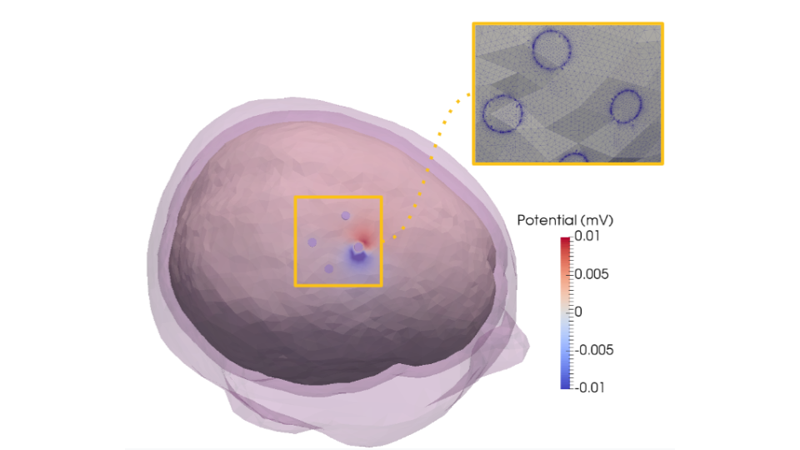Epilepsy is a chronic neurological disease that afflicts over 60 million people, worldwide. In 70% of the cases, patients can be effectively treated with antiepileptic drugs or resective surgery. At present, deep brain stimulation (DBS) of the anterior nucleus of the thalamus is a Class I evidence treatment for medically refractory epilepsy. However, DBS treatment effects are variable across patients, without knowledge of mechanisms or biomarkers that may account for this variation. The success rate of DBS may be significantly improved by optimizing and tailoring stimulation parameters to each individual patient.
To achieve this, investigations can be conducted numerically with the Finite Element Method (FEM), where the electric currents injected or recorded by DBS electrodes are simulated. FEMfuns (https://www.fieldtriptoolbox.org/development/project/femfuns/) is a software toolbox that allows neuroscientists to run simulations in a variety of different geometrical domains, including various types of source models and electrode properties, such as resistive and capacitive materials, and, the double-layer that exists at the electrode-tissue interface.
So far the focus was on electrocorticography (ECoG) electrodes, see Figure 1, and the aim of this master assignment would be to extend the code to allow for DBS electrode modeling within the same framework and study sensing parameters.

Figure1: simulation of ECoG data in a human headmodel with FEMfuns
Interested? Contact Maria-Carla Piastra (m.c.piastra@utwente.nl), CNPH group, S&T Faculty, UTwente
